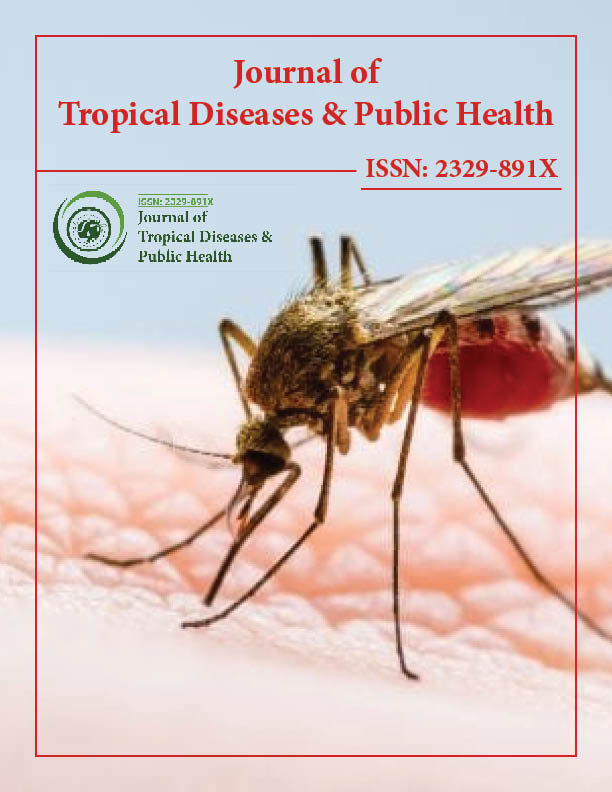Indexed In
- Open J Gate
- Academic Keys
- ResearchBible
- China National Knowledge Infrastructure (CNKI)
- Centre for Agriculture and Biosciences International (CABI)
- RefSeek
- Hamdard University
- EBSCO A-Z
- OCLC- WorldCat
- CABI full text
- Publons
- Geneva Foundation for Medical Education and Research
- Google Scholar
Useful Links
Share This Page
Journal Flyer

Open Access Journals
- Agri and Aquaculture
- Biochemistry
- Bioinformatics & Systems Biology
- Business & Management
- Chemistry
- Clinical Sciences
- Engineering
- Food & Nutrition
- General Science
- Genetics & Molecular Biology
- Immunology & Microbiology
- Medical Sciences
- Neuroscience & Psychology
- Nursing & Health Care
- Pharmaceutical Sciences
Perspective - (2024) Volume 12, Issue 4
Global Health Perspectives on Preventive Chemotherapy for Strongyloidiasis Control
Boylan Morton*Received: 25-Nov-2024, Manuscript No. JTD-24-27751; Editor assigned: 29-Nov-2024, Pre QC No. JTD-24-27751 (PQ); Reviewed: 13-Dec-2024, QC No. JTD-24-27751; Revised: 20-Dec-2024, Manuscript No. JTD-24-27751 (R); Published: 27-Dec-2024, DOI: 10.35241/2329-891X.24.12.461
Description
Strongyloidiasis, caused by the nematode Strongyloidiasis stercoralis, is a Neglected Tropical Disease (NTD) with significant global health implications. Its ability to cause chronic and life-threatening hyper infection underscores the need for innovative public health strategies. Preventive Chemotherapy (PC) is emerging as an essential tool for controlling Strongyloidiasis, particularly in endemic regions. This manuscript explores global health perspectives on the role of PC in strongyloidiasis control, its integration into international programs and the challenges and opportunities associated with its implementation.
Strongyloidiasis affects an estimated 370 million individuals worldwide, predominantly in tropical and subtropical regions. Its chronicity, coupled with the risk of hyper infection in immunosuppressed individuals, contributes to significant morbidity and mortality. Despite its global prevalence, the disease is often overlooked in public health agendas. Preventive chemotherapy involves the periodic administration of antiphrastic drugs to at-risk populations, regardless of individual infection status. While widely used to combat other NTDs, such as lymphatic filariasis and Onchocerciasis, its application for Strongyloidiasis is less established but increasingly recognized as a promising approach for control. Strongyloidiasis is endemic in regions with poor sanitation, particularly in Sub-Saharan Africa, Southeast Asia, Latin America and parts of the Pacific. However, the true burden remains underestimated due to diagnostic challenges and underreporting.
High-risk groups include children, agricultural workers and immune compromised individuals, such as those with HIV/ AIDS or undergoing corticosteroid therapy. The disease’s chronic nature often leads to long-term health consequences, further exacerbating the vulnerability of affected populations. By reducing parasite burdens in communities, PC decreases environmental contamination and the risk of new infections. Many individuals with Strongyloidiasis are asymptomatic, making individual diagnosis and treatment challenging. PC offers a population-wide approach to mitigate this issue. The drug of choice for Strongyloidiasis is ivermectin due to its high efficacy and safety. Although less effective, albendazole may be used in combination regimens or where ivermectin is unavailable.
Mass Drug Administration (MDA) involves administering antiphrastic drugs to entire communities in endemic areas. Alternatively, targeted PC programs focus on high-risk populations, such as school-aged children and immuno compromised individuals. PC for Strongyloidiasis can be integrated into existing NTD programs, such as those targeting Soil-Transmitted Helminthes (STHs), to optimize resources and expand reach. Partnerships between international organizations, governments, and non-governmental organizations can drive program implementation. Coordination with the World Health Organization (WHO) and regional health bodies ensures standardization and scalability.
Establishing robust surveillance systems is critical for assessing program impact and guiding policy adjustments. Incorporating serological and molecular diagnostic tools enhances the accuracy of prevalence data. The lack of sensitive and cost-effective diagnostic tools hinders the identification of endemic regions and the evaluation of PC outcomes. Ensuring a reliable supply of ivermectin, particularly in low-resource settings, remains a challenge. Advocacy for pharmaceutical partnerships and subsidized drug pricing is essential.
Cultural beliefs and misconceptions about disease and treatment may reduce PC uptake. Tailored health education campaigns can address these barriers and promote trust. The potential for resistance due to repeated drug administration highlights the need for on-going research into alternative treatments and combination therapies. Research into vaccines offers hope for long-term disease control. Combining serological and molecular techniques with clinical data can improve the precision of PC programs. Strongyloidiasis needs greater recognition in global health agendas. Advocacy efforts should aim to prioritize the disease within WHO’s NTD Roadmap and secure funding for control programs.
Training local healthcare workers to administer PC and monitor outcomes strengthens program sustainability and builds local expertise. Thailand’s integration of ivermectin into its NTD control program has significantly reduced the prevalence of strongyloidiasis in endemic areas, demonstrating the feasibility of PC on a national scale. In rural Peru, community-driven MDA campaigns, supported by NGOs, have successfully lowered disease incidence and enhanced public awareness. Preventive chemotherapy represents a transformative opportunity to control and potentially eliminate strongyloidiasis as a public health threat. While challenges persist, utilizing global health frameworks, advancing diagnostic and therapeutic innovations, and fostering international collaboration can pave the way for sustainable progress. Strongyloidiasis control requires a unified global commitment to ensure the health and well-being of affected communities worldwide.
Citation: Morton B (2024). Global Health Perspectives on Preventive Chemotherapy for Strongyloidiasis Control. J Trop Dis. 12:461.
Copyright: © 2024 Morton B. This is an open-access article distributed under the terms of the Creative Commons Attribution License, which permits unrestricted use, distribution, and reproduction in any medium, provided the original author and source are credited.

